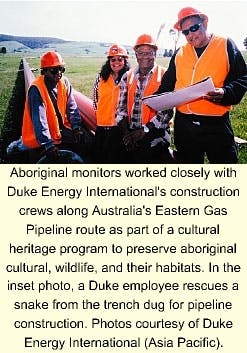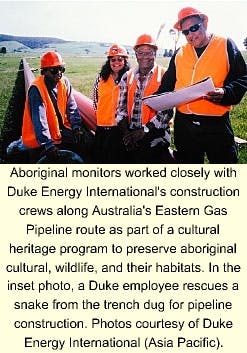On Sept. 15, 2000, more than 10,000 athletes from 198 countries gathered in Sydney, Australia, for the opening ceremony of the 2000 Summer Olympic games, and over 3.5 billion people viewed the event on television.
Traditionally, the ceremony begins with a parade of nations, speeches from the organizing committee, and raising the Olympic flag, followed by the lighting of the cauldron flame, and then the releasing of the doves-a symbol of peace.
The most widely recognized and visible symbol of the opening ceremony is the lighting of the Olympic flame. The tradition of lighting an Olympic flame originated with the ancient Greeks. During the ancient Olympic games, the sun's rays were used to ignite a sacred flame that remained lit until the games ended. At that time, the flame signified the "endeavor for protection and struggle for victory." The flame became a part of the modern Olympics at the 1928 Amsterdam games and soon came to symbolize "the light of spirit, knowledge, and life."
In 1936, at the Berlin games, the tradition of lighting the Olympics flame with a torch borne by athletes running a relay race came into being. Since then, a torch carried in a relay race by athletes has always been used to ignite a flame in a cauldron at the Olympic stadium during the opening ceremony.
Fueling the flame
The primary energy source fueling the cauldron flame at the Sydney 2000 Olympics was provided by the Eastern Gas Pipeline operated by Duke Energy International (DEI)-a subsidiary of Duke Energy Corp., Charlotte, NC. Construction of the $297 million, 495-mile pipeline began in August 1999 with three construction crews working with 47,000 lengths of steel line pipe weighing a total of 95,000 tons.
DEI Eastern Gas Pipeline General Manager Mark Landseidel said that the 18-in. pipeline-with a capacity of 272 MMcfd-was built in five major spreads and involved about 600 workers.
The pipeline links the Gippsland basin gas fields in Bass Strait with regional and metropolitan industrial centers including Wollongong, Sydney, and Newcastle. The line starts in Victoria at Longford and runs through East Gippsland before turning north past Bombala and Cooma in New South Wales. The line then heads northeast to the coast through Nowra, Port Kembla, Wilton, and on to Horsley Park on the outskirts of Sydney.
Aboriginal heritage preserved
During construction, Landseidel said that more than 500 aboriginal monitors and archaeologists worked closely with crews along the route to ensure that culturally significant aboriginal features were preserved during the construction process (see photo).
Landseidel said,"Such a program has never previously been undertaken in the Australian pipeline industry on such a scale nor have had the wildlife protection and vegetation management programs that we've undertaken. Our zoologists go to great lengths to protect wildlife during construction, and this includes retrieving animals that have strayed into the trench (see inset photo)."
Throughout the planning process of the pipeline, DEI said that it selected the most appropriate alignment for the pipeline to minimize impact on the environment and that 95% of the pipeline route is in already-disturbed land.
Olympic flame extinguished
At the closing ceremony of the Olympics, on Oct. 1, 2000, the Olympic flame was extinguished after burning for 17 days straight-consuming 13.8 MMcf of natural gas.
EnergyAustralia-which supplied the energy needs of the Sydney Olympics-said that, in 1 day, the Olympic cauldron used the same amount of gas as 35 average Australian homes do in a year.
In addition to fueling the Sydney Olympics, the Eastern Gas Pipeline now delivers natural gas to municipalities in New South Wales and Victoria. DEI anticipates a future lateral pipeline connection to Canberra, Australia's capital city.
Michael McDanold, DEI executive vice-president and managing director of the company's Asia-Pacific region, said the Eastern Gas Pipeline will be Australia's most significant interstate gas link. "The pipeline will enable gas trading between the country's two most populated states-Victoria and New South Wales-and open the way for genuine competition for gas and other forms of energy."




